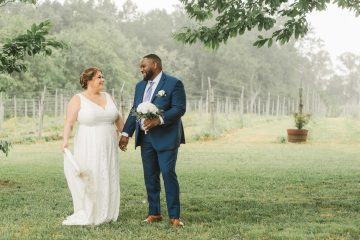Engagement ring shopping can be a bit overwhelming. Let this guide help you and your significant other decide on a few basic details before heading to the jewelry store!
Stone Selection
Engagement rings typically have a diamond as the main stone, but recent trends have put other gem stones on the scene. Many of these gem stone rings are vintage inspired, like the emerald and diamond duo shown below.
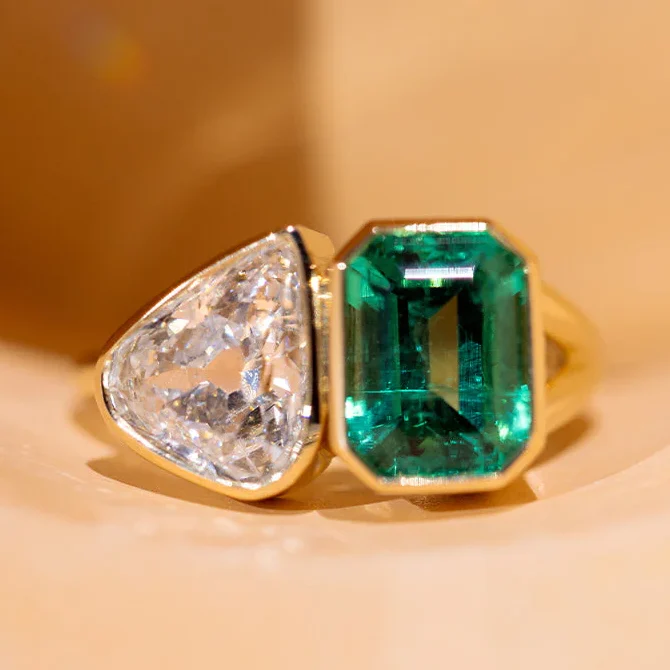
If you’re going the diamond route, there’s another big decision: natural or lab grown. The main difference in these two options is how they’re made; natural are harvested out of the ground, while lab grown are created in the laboratory. Both have the same chemical make up and are real diamonds. Additionally, lab grown diamonds tend to be a bit more budget friendly. Make sure to discuss with your partner which is best for your situation.
Trendy or Timeless?
After deciding on what kind of stone, get the overall vibe of what your girlfriend likes. Trendy styles include oval diamonds, non-traditional rings, and chunky bands. More traditional styles are round or emerald cut diamonds and three-stone settings.
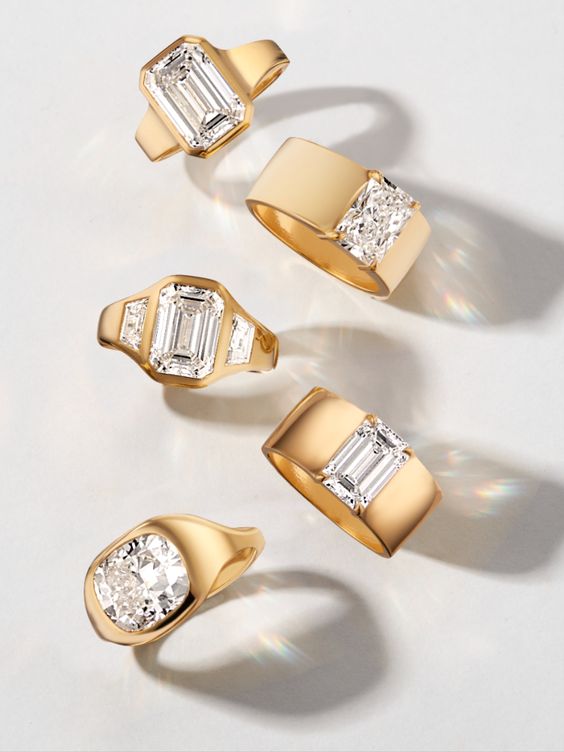
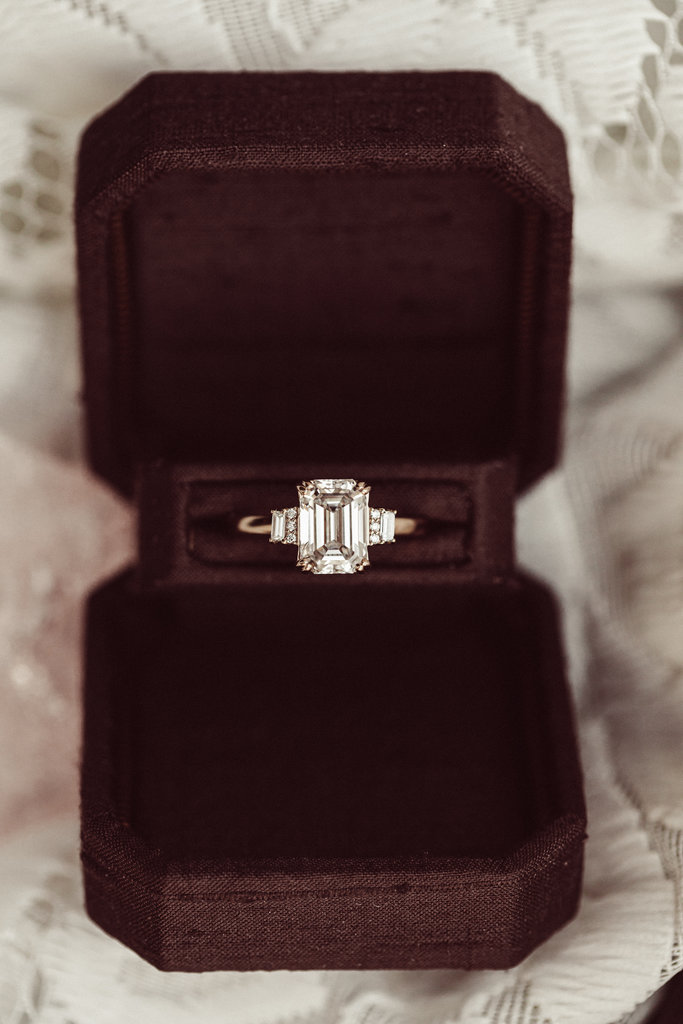
The 4 C’s
The Gemological Institute of America certifies diamonds based on four categories: carat, clarity, color, and cut. Keep reading for more information and use this visual as a guide!
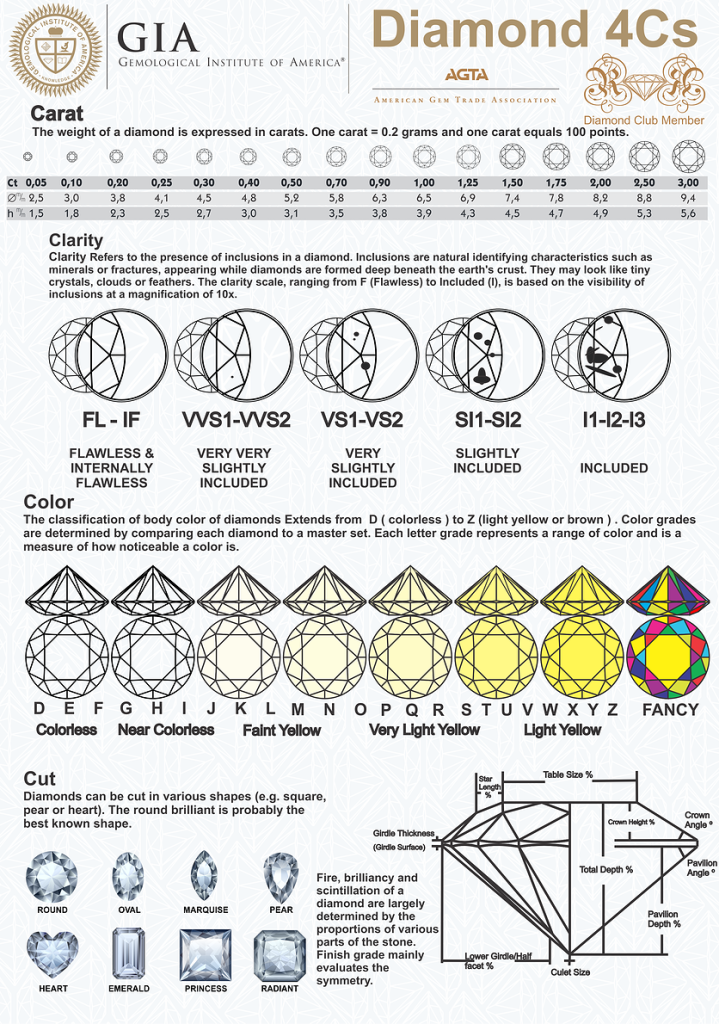
Carat
Carat refers to the weight (and size) of the stone. This is one of the easiest of the four categories, because most people are already familiar with this concept.
Clarity
Clarity is used to measure the impurities in the stone. Flawless (FL-IF) is the highest rank. This means there are virtually no inclusions in the diamond. The scale continues downward to VVS1-VVS2, very very slightly included, which means there are slight flaws that are only visible under 10x magnification. VS1-VS2 follows next, meaning there are a few imperfections seen with close inspection or with magnification. SI1-SI2, or slightly included, means the impurities are visible with the naked eye.
Typically, the closer to flawless, the more expensive the diamond is, but price also varies based on the other C’s as well.
Color
Color is another factor that can be discerned with the eye. The color classification begins at D, which is the most colorless, and goes through Z. Classifications D-F are considered colorless, G-I near colorless, and around K is when yellowness/warmness becomes visible. Some prefer a warmer colored diamond, while others like colorless more. It’s really personal preference!
Cut
Lastly cut is all about the shape. Common cuts are round, emerald, princess, marquise, pear, radiant and oval.
Band and Setting
Hopefully by now you aren’t overwhelmed with the many choices of stones. There are still a few more decisions to be made, however. One is the type of metal: sterling sliver, white gold, yellow gold, rose gold or platinum. Next decide on one stone or multiple stones. This will dictate the type of setting. Lastly, choose the width of the band.
If you are planning a wedding in Roanoke Virginia, Richmond Virginia, Fredericksburg/Northern Virginia, The Shenandoah Valley, Coastal Virginia or in Charlottesville/ Lynchburg Va. we can help with your wedding planning and ideas.



